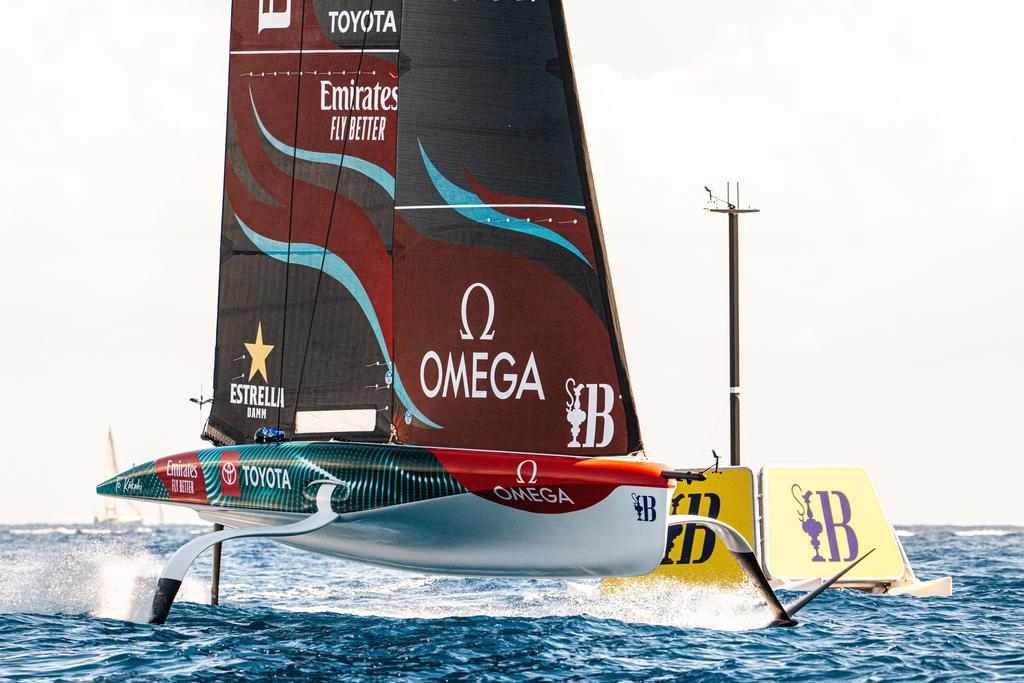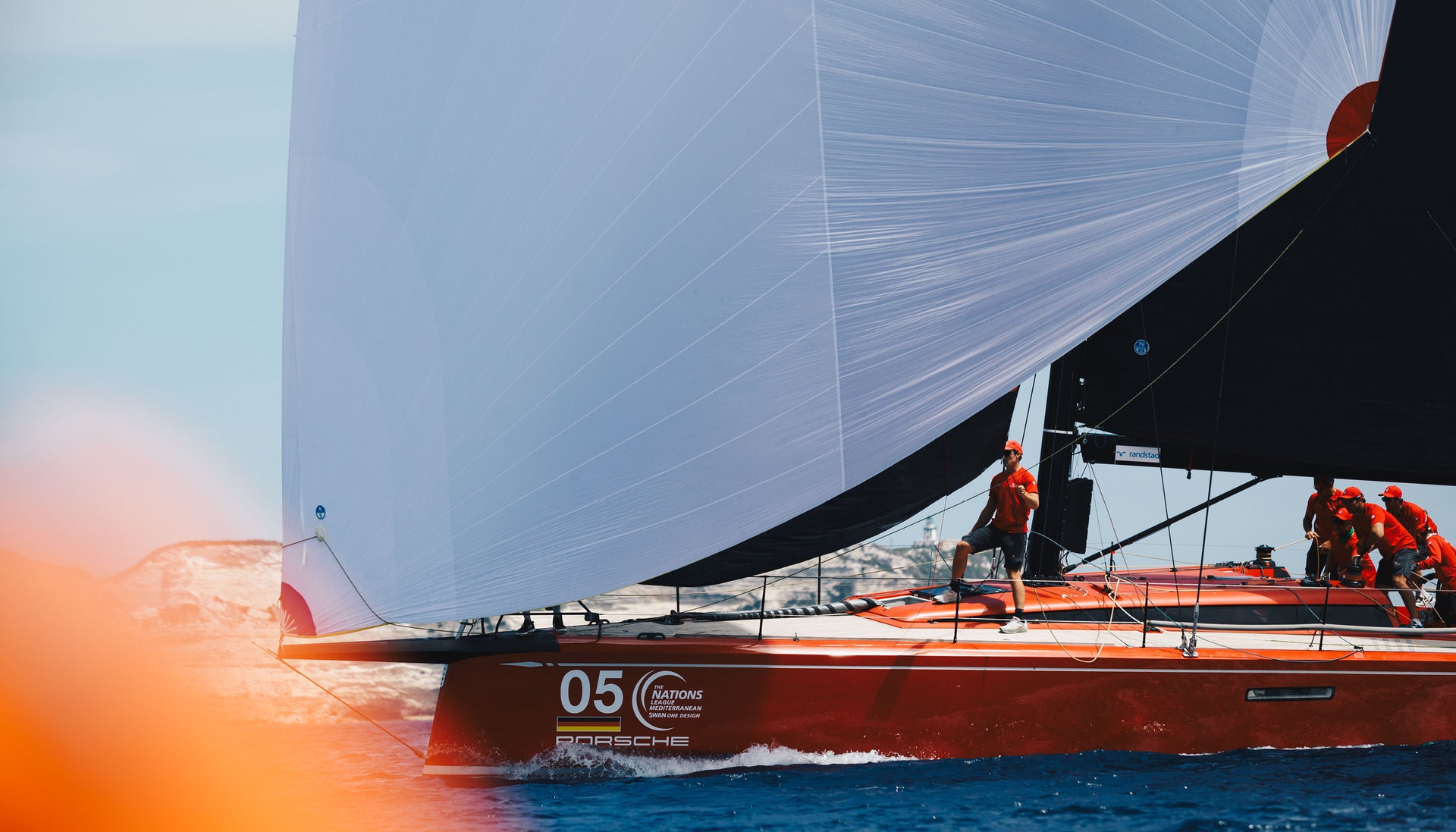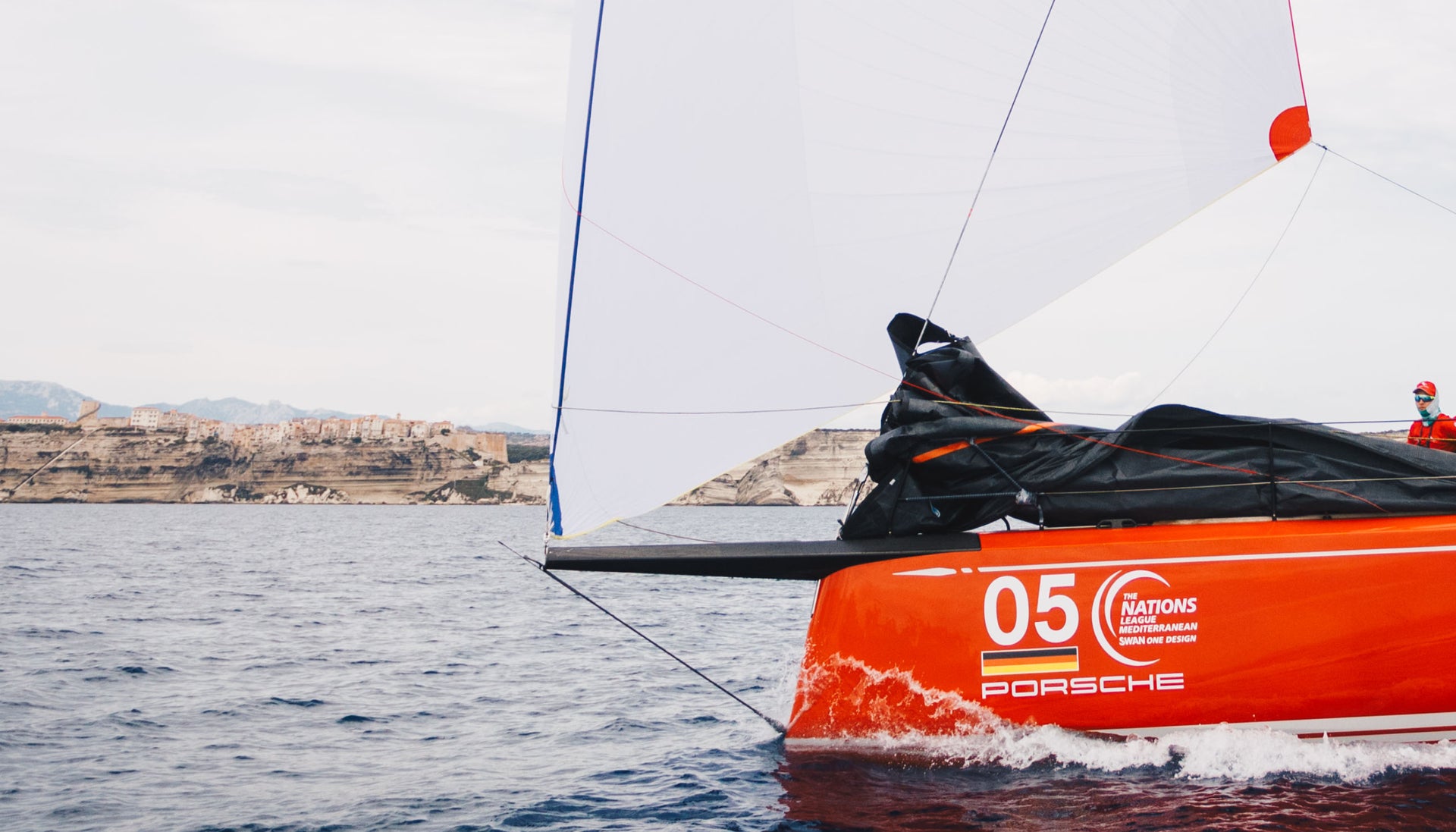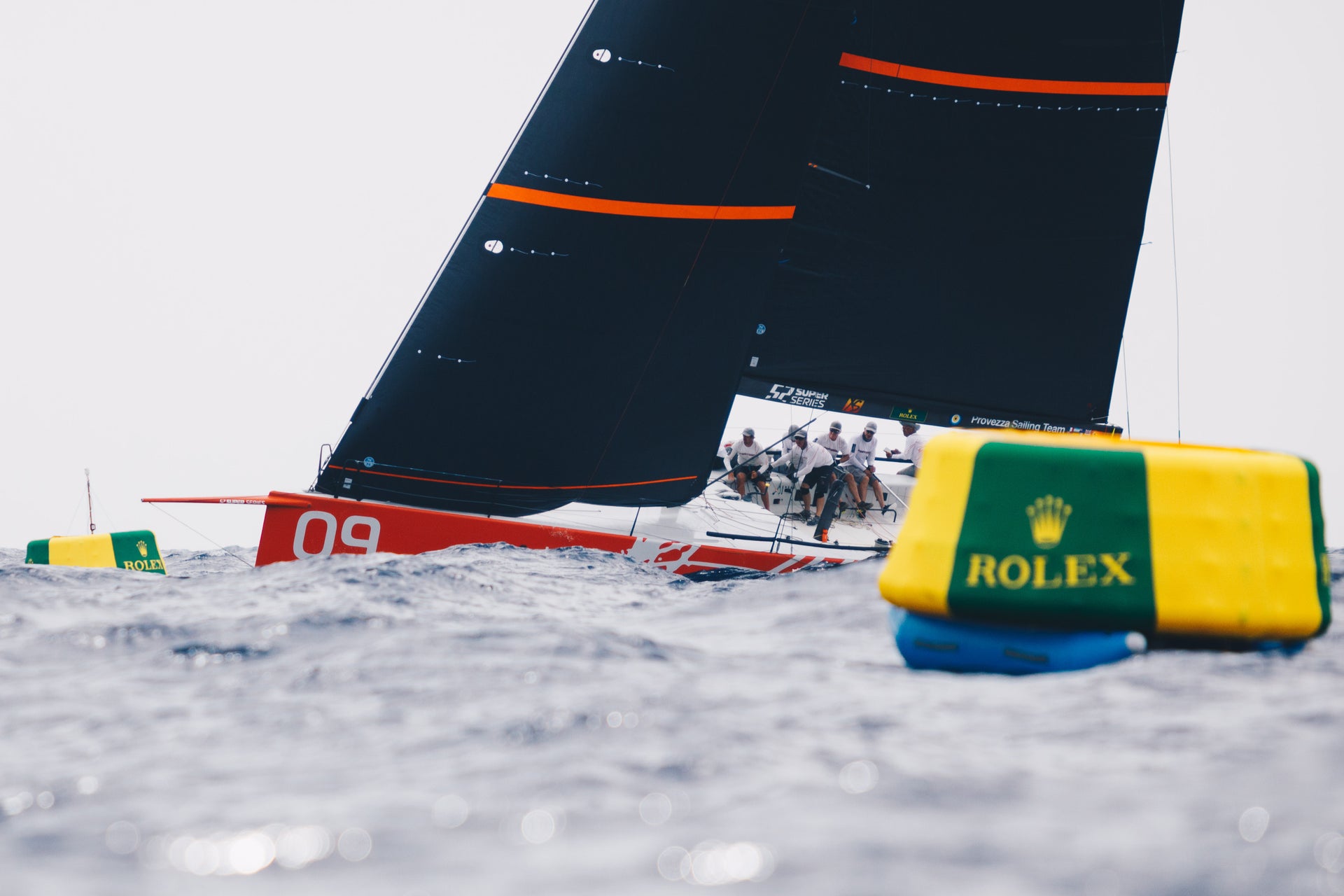TECH BRIEF: AC40
North Sails is the official one-design sail supplier to the AC40, outfitting the boats with 3Di sails.

This article was originally written as a Seahorse Tech Brief sponsored by North Sails.
At first no-one believed the AC75 concept could ever possibly work. Barely three years later and the smaller AC40 offspring of those as-it-turned-out spectacularly successful AC75s are available to all (well sort of...).
When the original concept for the new America’s Cup class was announced after Emirates Team New Zealand won in Bermuda, few could believe what they were looking at. A 75ft monohull with no keel, flying on a hydrofoil to leeward and a single T-foil rudder was difficult to imagine. But as we now know, the concept not only works; it is developing fast. North Sails’ designer Burns Fallow has been with Team New Zealand since 1993 where he and his team have both witnessed and been responsible for some of the biggest changes in the sail package.
Understandably, for sailors and spectators much of the focus has been on the foils, yet the last Cup revealed that the sailplan was also an area where huge progress was being made. And while development for the next generation of AC75 continues, the AC40 is taking some of the advanced technology beyond the rarefied Cup world and into the wider grand prix sailing arena.
Aside from his extensive work with North Sails that has spanned 35 years, Fallow has been at the heart of some of the biggest changes in the aero side of Cup boat design. From his work as the initial design coordinator for the solid wing in the 2013 Cup in San Francisco through various iterations of the wing and then back to soft sails for Auckland in 2021, the step changes across Cup cycles have been large. For many watching from outside, it has been difficult to follow the rationale and potential benefits that have led Cup design from wings back to conventional looking sailplans.
‘The most obvious difference between the wings of previous Cups and the current twin-skinned mainsails is that one is solid and the other essentially a soft sail, albeit two sails working together,’ he says. ‘But one of the most fundamental points when it comes to handling is that the solid wings needed an army of people to put them in and take them out each day, whereas the twin-skinned soft sails can be lowered easily by the crew. And that’s pretty significant when it comes to taking new technology forward and making it applicable to the wider racing world.

‘Under sail, the wing on the AC50s had the advantage that you could control twist and camber at a range of heights up the rig using the control systems that were inside the wing. This allowed trimmers to go from positive to negative cambers. In the last Cup the rules allowed only two areas of control, at the bottom and at the top.
‘And now for AC37, control at the top is not allowed, instead it’s just the bottom that can be controlled. So the current AC mainsails now operate more like a conventional sail on a halyard lock where the cunningham, sheet and traveller are the primary controls.’
Broadly speaking this means that mainsail trim has returned to conventional techniques. Sheet on and the upper leech stands up, ease the sheet off and the opposite happens. But the AC75 and AC40s also have rotating masts which provides another area for control.
‘Being able to rotate the mast does help in being able to change gear and this is especially important when it comes to the range of power that is required to get on the foils and then change the sail profile when you’re up and running at high apparent wind speeds.’ But while the basic functions may have been simplified, the clew area on the latest mainsails looks especially complicated.
‘When the rules were written for the AC75 mainsails we had just been through two and half cycles of wings and we thought we needed all that control. The reality was that we didn’t need that much equipment up there and the twist could be achieved without it. But now we’ve got the additional complexity of two mainsails rather than one and there are several reasons for that. To understand the advantages, it’s best to compare with an equivalent wing.
‘One of the big disadvantages of the solid wing was that it was very heavy. The twin-skinned mainsails are much lighter. We also realised that a lot of the time the wings were depowered in the upper sections and as a result they were just creating drag. That’s why the rigs for the AC75 look a lot shorter because we realised that aside from what’s required to get up onto the foils, once up and running we don’t need that much power. It’s why this generation of boats is so quick upwind, lower drag from the rig and only two foils in the water rather than three on the cats.
‘We also knew that when you crash with a wing it can cause extensive damage, whereas the twin-skinned mainsails are very robust. And then at the end of the day you can drop the sail and dock the boat.’
So, given the return to conventional control systems, why the double skin mainsail?
‘It's a drag thing. A single skin on any mast is going to have a higher drag profile. Then, when you’re operating at high apparent wind speeds having the air between the two skins makes the sail very settled. You never see these sails flap like you would with a conventional sail. As a result, we're able to get much, much flatter cambers with a double skin sail than we could with a single skin. A single skin sail at five per cent camber would just be ragging all the time in the wake of the mast. That was one of the decisions we took very early in the AC36 cycle when we were brainstorming what sort of rig solution could work.’

Given that speeds have increased significantly in other classes outside the Cup, does he think there could be future for this setup aboard high-performance grand prix boats such as the Ultime class and the Imoca 60s?
‘There will be a crossover and while those boats aren’t necessarily spending as much time upwind as a Cup boat, they do spend a lot of time reaching which keeps their apparent wind speed up so this configuration may well help.’
During the last Cup, another detail to emerge was the decision on whether or not to have a boom. And while there were a variety of configurations, according to Fallow there are still pros and cons for each configuration. But for the AC40 there is no boom.
‘The arrangement is very similar to the control system we had on Te Rahutai [ETNZ’s raceboat in the last Cup]. There’s an adjustable clew board on each of the clews of the two sails, so that’s effectively your outhaul control. So, if you want to flatten the foot you go forwards with the clew board. Because the mainsheet traveller is a fixed point on the deck, that makes the mainsheet angle more horizontal which flattens the bottom of the sail. Conversely, you move the clew board aft which makes the mainsheet angle more vertical and pulls down more on the leech which reduces the twist in the main.’
As photographs in this area of the sail highlight, from the size and complexity of the kit in the clew region it is clear that the loads are very high in this area. ‘The thing to remember is that with such high apparent wind speeds and such narrow apparent wind angles we’re dealing with very flat sails and it’s those factors that lead to the high loads,’ he continues.
The ingenuity and sophistication of the sail control systems has clearly allowed more effective controls which in turn has helped to achieve more stable flight and ultimately higher, more consistent speeds, but there is still a key constraint - power.
The AC40s do not have any physically powered controls and are electro-hydraulically driven, yet there is still a finite limit on the amount of power available. But for all the hightech advances that have been made since the Cup got up on foils, the very fact that a concept that many of the world’s experts found difficult to envisage working is now available for non-Cup teams to buy is not only impressive, but one of the biggest advances after just one Cup cycle.



























